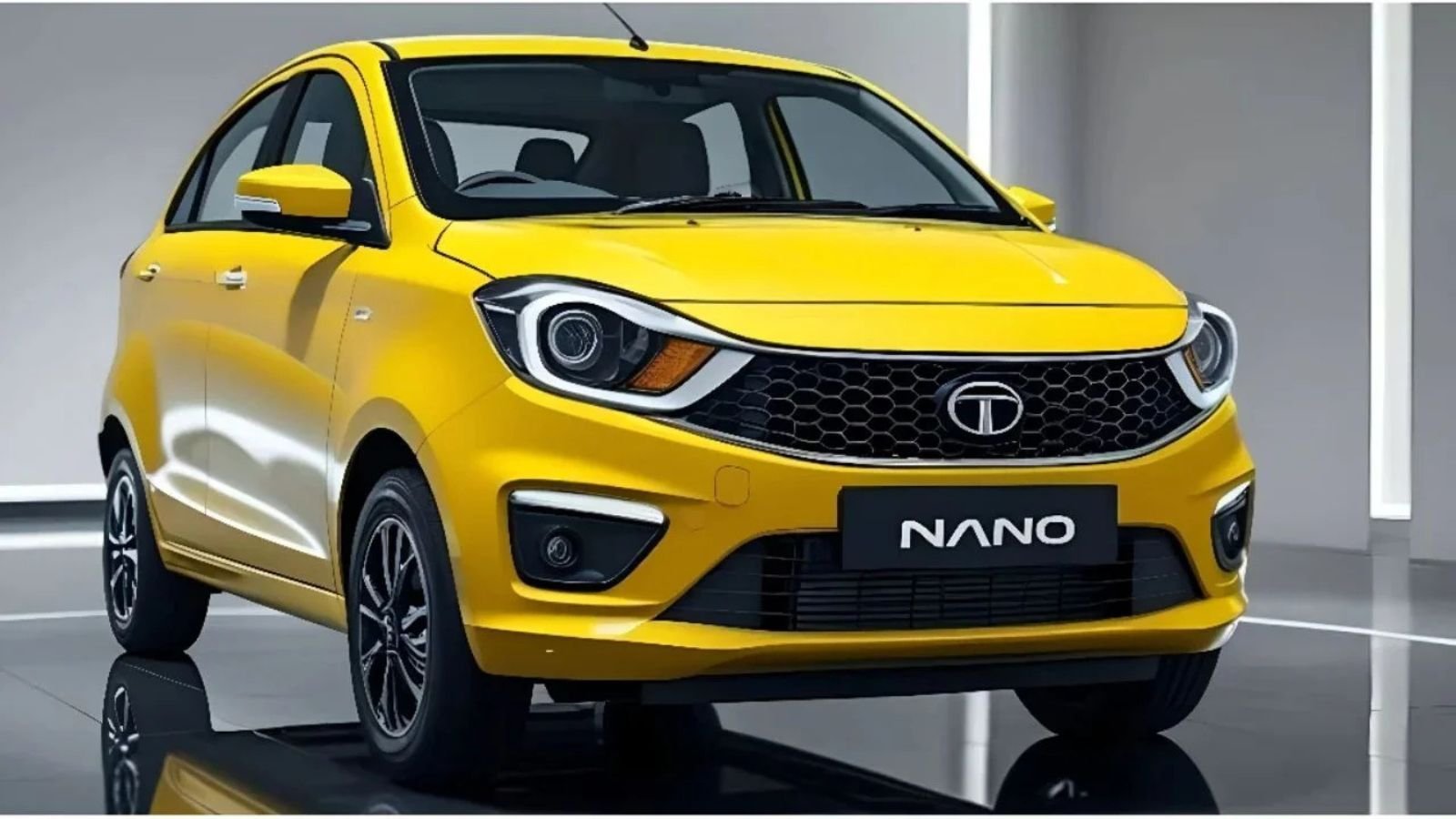Once upon a time, there was a car that created waves not just in India but across the globe. That car was the Tata Nano. First launched in 2008 by Tata Motors, it was introduced as the “People’s Car” — an automobile built for the common Indian household. With its revolutionary pricing, compact size, and city-friendly features, it became a symbol of accessible car ownership. Fast forward to today, and the buzz around the New Tata Nano is stronger than ever.
While the original Nano ceased production in 2018, it never really left people’s hearts. The idea of owning a reliable, small, fuel-efficient car at an affordable price still appeals to millions. With discussions around the possible relaunch of the New Tata Nano, now is the perfect time to revisit its legacy and explore what a reimagined version might bring to the roads.
Why the New Tata Nano Still Matters
When the Tata Nano made its debut in 2008, it made headlines for being the cheapest car in the world. Priced around ₹1 lakh, it gave Indian families, many of whom were previously dependent on two-wheelers, the opportunity to own a car. The car’s compact footprint, reasonable fuel economy, and low maintenance needs made it perfect for city dwellers.
The New Tata Nano, if and when it arrives, could take this legacy forward — only this time, with enhanced technology, updated design, safety features, and possibly even an electric or hybrid engine. In a country like India, where urban congestion and rising fuel prices are pressing issues, a new-age Nano could strike gold once again.
Tata Nano (Original) — Key Specifications at a Glance
| Specification | Details |
|---|---|
| Manufacturer | Tata Motors |
| Launch Year | 2008 |
| Engine | 624cc, 2-cylinder petrol engine |
| Mileage | 20–25 km/l |
| Seating Capacity | 4 persons |
| Top Speed | Around 100 km/h |
| Standout Features | Compact size, rear engine, AC, optional power windows |
| Production Ended | 2018 |
| USP | World’s most affordable car |
What Made the Tata Nano So Special?
The original Nano was a breakthrough in minimalist engineering. Despite its small size, it could comfortably seat four adults. The rear-mounted engine freed up space, offering a surprising amount of legroom and headroom. It came with a basic AC system, and later variants even offered power windows and infotainment features.
It was never meant to compete with premium hatchbacks — instead, it was designed to be a smart alternative to a two-wheeler. Its incredible affordability and easy maneuverability on narrow streets made it a preferred choice for first-time car buyers.
The New Tata Nano, if reintroduced, has the potential to bring back all that practicality while fixing earlier shortcomings. With better interiors, digital features, improved suspension, and added safety elements, the car could appeal to a broader audience.
City-Ready Design and Fuel Efficiency
The biggest advantage of the Nano was its fuel economy and compact design. Delivering around 20–25 km/l, it was among the most efficient petrol cars of its time. Its light weight and tight turning radius allowed it to easily handle narrow lanes, busy traffic, and tight parking spots.
A reimagined New Tata Nano would likely retain this agility while going a step further. With India’s growing push toward electric vehicles, the new Nano could easily be launched as an electric or hybrid version — ideal for urban commuting and environmentally conscious consumers.
Challenges the Tata Nano Faced
Despite being revolutionary in concept, the Nano faced significant challenges post-launch. The biggest issue was perception. While Tata Motors promoted it as an affordable solution, many interpreted “cheap” as lacking quality. This image proved difficult to shake off.
Technical glitches in early models — including some rare fire-related incidents — further dented its reputation. Even though Tata Motors worked on improving safety and build quality in later versions, the initial damage had already made consumers cautious.
Moreover, with rising incomes and changing aspirations, buyers started gravitating toward better-equipped hatchbacks. The emotional pull of “first car” wasn’t enough when competitors were offering flashier alternatives.
But now, with the New Tata Nano, Tata Motors has a golden opportunity to rewrite the narrative — not by selling it as a “cheap” car, but as a smart, compact, and tech-forward mobility solution.
End of Production, Not the End of the Dream
In 2018, Tata Motors finally discontinued the Nano due to declining sales. But the dream it carried — of making car ownership accessible for every Indian — continues to inspire. It was more than a product; it was a symbol of aspiration.
Today, as anticipation around the New Tata Nano builds, there’s hope that it will come back stronger. Modern buyers are looking for compact EVs, efficient hybrids, or feature-rich city cars. If Tata positions the new Nano right, it can appeal not just to budget-conscious families, but also to urban professionals, students, and even as a second car in multi-car households.
What Can We Expect from the New Tata Nano?
Here’s what a 2025 version of the New Tata Nano might offer:
- Electric powertrain with 200–250 km range
- Regenerative braking and fast-charging support
- Touchscreen infotainment with smartphone connectivity
- Dual airbags, ABS, and EBD for better safety
- Improved cabin materials and a digital instrument cluster
- Better suspension setup for rough city roads
- Compact, futuristic design for city maneuverability
The idea is not just to bring the Nano back, but to bring it back better than ever. With government EV subsidies under FAME II and increased environmental awareness, an electric New Tata Nano could be the perfect affordable EV India has been waiting for.
Frequently Asked Questions – New Tata Nano
Q1. Was the original Tata Nano a 4-seater?
Yes, it had space for 4 adults and was surprisingly roomy for a car of its size.
Q2. What mileage did the Nano offer?
It delivered an impressive mileage of 20–25 km/l, making it a fuel-saver in urban conditions.
Q3. Is the Tata Nano still available?
No, it was discontinued in 2018. However, there’s strong buzz about a New Tata Nano comeback with new features and a modern approach.
Q4. Could the New Tata Nano be electric?
Yes, that’s one of the most likely directions. Tata Motors has been investing heavily in EVs, and Nano could be their mass-market electric city car.
Conclusion: New Tata Nano — The Return of a Dream
The Tata Nano was never just a car. It was a dream on four wheels. It promised mobility to millions who had never thought they could afford a car. And while its journey had its ups and downs, it left a permanent mark on India’s auto landscape.
Now, the possible return of the New Tata Nano represents not just nostalgia, but evolution. With modern upgrades, smarter design, and eco-friendly engineering, it has the potential to win back hearts — and sales — all over again.
Whether it’s a student’s first EV, a small family’s city runabout, or a sustainable mobility choice, the New Tata Nano can once again become the car that redefines urban driving in India.
Some Important Link
| Download News APP | Click Here |
| WhatsApp Group | Click Here |
| Home Page | Click Here |















